The European Union recently passed the Deforestation Regulation, a groundbreaking law that requires companies to…
The post Europe’s Law Will Protect Forests. Can It Help You Do the Same? appeared first on Earth911.

The European Union recently passed the Deforestation Regulation, a groundbreaking law that requires companies to…
The post Europe’s Law Will Protect Forests. Can It Help You Do the Same? appeared first on Earth911.
Today’s inspiration is from writer, biologist, and environmentalist, Rachel Carson: “The more clearly we can focus…
The post Earth911 Inspiration: Wonders and Realities of the Universe appeared first on Earth911.

This story is part of Record High, a Grist series examining extreme heat and its impact on how — and where — we live.
Inflation is finally easing. Americans are paying less for gas than they were a year ago. Furniture, television, and airfare prices have all fallen since last summer. Even the used car market is cooling off after its meteoric rise. But one unsuspecting staple in many American kitchens has become a prominent outlier: olive oil. The price of the already pricey liquid fat has soared to a record high this summer.
It’s the latest chapter in the annals of heatflation — when scorching temperatures harm crops and push food prices up. A yearlong drought and a spring of extreme heat in Spain, the world’s largest olive oil producer, devastated the country’s olive groves. Spanish olive oil production fell by a half — from an estimated 1.3 million to 610,000 metric tons — over the past year. Now fears are mounting over the very real possibility that the country’s inventory will run out before the next harvest begins, in October.
“For Spaniards, this is a real crisis,” Bloomberg columnist Javier Bias recently wrote. “We generously coat our food in olive oil.”
It’s also a big deal for the rest of us, given that something like half of the world’s olive oil comes from Spain. As barrels run dry, cooks around the world are paying an almost unheard of premium for the nutty, liquid gold that makes lettuce more palatable and bread more nutritious. Worldwide, olive oil now costs $8,600 per metric ton, more than twice as much as it did a year ago and nearly 14 times more than crude oil. (It would set you back around $720 to fill up the typical car’s 12-gallon tank with olive oil found on Amazon.)
What’s happening is “not normal at all,” said Kyle Holland, a vegetable oils analyst at Mintec, a food market research firm. “It was just too hot and too dry for too long.”
Olive oil is one of many foods — one of many condiments, even — that are threatened by the severe and unpredictable weather brought on by climate change. As the global temperature ticks up, droughts are occurring more frequently, heat is getting harder for farmers to manage, and wildfires and floods are becoming more menacing to growers around the world. As a result, grocery store shelves aren’t getting stocked and food prices are going up. Ultra-dry conditions in Mexico have withered peppers, leading to a sriracha shortage in the United States. Record warming has decimated Georgia’s famed peaches, which require a few weeks of cool weather each winter to blossom. Ketchup, coffee, and wine all could end up on the chopping block, too.
Olive trees are no strangers to heat, and they don’t need much water compared to other crops, like tomatoes. Humans have been cultivating them in the Mediterranean’s warm climate — and crushing them for oil — for at least 6,000 years. But even hardy olives have their limits. Temperatures above 86 degrees Fahrenheit can impair their ability to convert sunlight into energy, and prolonged dry spells can keep them from producing shoots, buds, flowers, and fruit.
Growers in the Mediterranean, a region warming 20 percent faster than the rest of the world and the source of 95 percent of olive oil production, are especially vulnerable. Drought caused Tunisia’s grain harvest to decline by 60 percent this year. And dry conditions led to poor yields for wheat and rice farmers last year in Italy, whose produce has helped build the country’s legacy of pizza, pasta, and risotto. This summer, they’ve had to contend with extreme heat, historic floods, and freak hailstorms, according to Davide Cammarano, a professor of agroecology at Aarhus University in Denmark. With such variability in weather, “it becomes very hard to manage a crop in the Mediterranean,” he said.
In a study published last year, Cammarano and his colleagues found that rising temperatures could cut the production of processing tomatoes — the sort used to make tomato sauce and ketchup — by 6 percent in Italy, the U.S., and other countries within the next three decades.
Perhaps no one this year has had it as bad as olive growers in Spain. Between October and May, the country received 28 percent less rain than usual, with the driest conditions in southern, olive-growing areas. “It’s a catastrophe,” Primitivo Fernandez, head of Spain’s National Association of Edible Oil Bottlers, told Reuters in March. Spain experienced its hottest April on record, with temperatures rising above 100 degrees F. And the heat has only gotten more punishing since, with the country now in the midst of its third heat wave of the year.
As a result, researchers predict that drought and heat waves associated with climate change will continue to take their toll on olives from the Iberian Peninsula to Lebanon. Hot and dry conditions last year scorched groves not only in Spain but also in Italy and Portugal, two of the world’s top four olive oil producers.
In the United States, too, severe weather is a concern for olive farmers, although unlike orchards in Spain that rely on rainfall, most in the U.S. are irrigated, which makes them more resistant to drought. Producers in California, the state that churns out the most olives but still contributes less than 3 percent of the olive oil consumed in the U.S., reportedly harvested one-fifth less than their historic average this season, following years of little rain that made some farmers’ wells go dry.
Winter and spring storms last spring in California eased the drought, but the cool weather and heavy precipitation slowed flowering and potentially lowered the amount of oil in each olive, according to Jim Lipman, chief operating officer at California Olive Ranch in Chico, the country’s biggest olive oil producer.
In an email to Grist, Lipman said that the high prices in Europe have increased demand for California oil and that California Olive Ranch has a strong crop heading into the upcoming harvest season, which starts in October. That said, early warming followed by frost has resulted in crop disasters in two of the last five seasons.
At Burroughs Family Farm in Denair, California, production has been fairly steady over the past few years, but “this year we are on the lower side” possibly as a result of an “incredible” amount of rain, said Benina Montes, managing partner at the regenerative almond and olive farm in California’s Central Valley. In a good year, the farm’s 10 acres of olives produce up to 40 tons of oil. This year, they yielded about three-quarters of that amount.
Montes said she hadn’t been following news of the shortage in Europe. But she figures the rise in demand caused by Spain’s low inventory might have helped her business. “No wonder our olive oil has been selling well on Amazon.”
This story was originally published by Grist with the headline Climate change is coming for your olive oil, too on Aug 25, 2023.
This story is part of Record High, a Grist series examining extreme heat and its impact on how — and where — we live.
A massive heat dome covered the central part of the United States on Thursday, stretching from Omaha down to New Orleans, putting 143 million people in 19 states under heat alerts.
In Chicago, temperatures reached 100 degrees F with a heat index of 120 degrees Fahrenheit on Thursday, which is the highest heat index the city has recorded, according to CBS Chicago. Hot weather that dangerous hasn’t roasted Chicago since its infamous 1995 heat wave, which killed more than 500 people over five days. This comes after a record-breaking hot day on Wednesday at 98 degrees F with a heat index of 116 degrees F.
It feels as if most of the United States has been under a heat advisory at one point or another this summer, with Arizona and Texas especially hard hit. Temperatures have been breaking records all over the world, with July setting records as the hottest month that the planet has seen in 120,000 years.
The past few days have seen heat creep up into uncharted territory, with places like Lawrence, Kansas recording a heat index of 134 degrees F, earlier this week. An analysis of data from the nonprofit research organization, the First Street Foundation, found that the next few decades will see the emergence of an “extreme heat belt” stretching from Northern Texas up through Illinois and parts of Wisconsin. By 2053, these areas will experience temperatures above 125 degrees F, according to the research.
In pockets of Chicago though, the heat is bringing people together with neighbors who are looking out for one another and offering water, fans, and information about the city’s cooling centers. This is despite the fact that cooling centers have been historically underutilized.
In Pilsen, a Latino neighborhood on the city’s Near West Side, a bookstore offered up their space as an unofficial cooling center.
Mandy Medley, a co-owner and worker at Pilsen Community Books, said that it was intrinsic to the bookstore’s mission to provide resources in a city which has few public restrooms and rest areas.
“I think it’s a natural extension of the role we try to play in the community,” said Medley. “We’re open to the public, we have one of the very few public restrooms available in the neighborhood.”
Medley also mentioned that the store regularly tries to remain open to community members — even when there isn’t record-breaking heat outside.
“In general, the store is a place where people can come hang out, it doesn’t have to just be doing extreme weather,” said Medley. “We don’t force people to spend money or stay here only a certain amount of time. It really is open anytime.”
Elsewhere in Pilsen, Rabbit Schoen, an organizer with Rising Tide Chicago, an organization focused on fighting climate change, helped hand out frozen water bottles to people who were unhoused living under a highway underpass.
“So the main things are just getting items to people who are in our neighborhoods and communities that are unhoused, who are at most risk of heatstroke, or heat exhaustion, or even heat death,” said Rabbit Schoen. “The simplest way to do that is give people cold water.”
Additionally, Rising Tide volunteers have been working with homeless people to allocate necessary resources beyond the heat wave, since people who are unhoused remain vulnerable to other climate events, like wildfire smoke, long after the heat has subsided.
While scientists are hesitant to say that individual climate events like this one are tied to climate change, heat waves in general are highly correlated with the global warming caused by burning fossil fuels, according to Jonathan Patz, a professor of health and environment at the University of Wisconsin-Madison.
“The climate crisis from burning fossil fuels that’s heating the planet, this is exactly what you expect: more frequent and more intense heat waves, said Patz. “All these extremes have been anticipated from human-induced climate warming for decades, you know, so we’ve been talking about this for a long time.”
During the scorching hot temperatures, a community group called My Block, My Hood, My City had volunteers that were crisscrossing the city’s neighborhoods on the South and West sides to pass out cases of water bottles and box fans to elderly folks who were in need.
“Our main thing is, taking care of people no matter what. And we know that some of the most vulnerable people in our communities are the senior citizens.” said Stephen Gilbert, Director of Youth and Community Development at My Block, My Hood, My City.
The group had nearly 400 requests for water and fans across the city, which they pivoted all their resources to try to meet.
“We don’t have a capacity to drop off 400 fans and waters today alone, we dropped off as many as we could,” said Gilbert. “And we’ll be back out there tomorrow doing the same thing.”
This story was originally published by Grist with the headline As Chicago broils, neighbors find ways to keep each other cool on Aug 24, 2023.
Japan has begun discharging treated water containing radioactive tritium from the decommissioned Fukushima Daiichi Nuclear Power Plant into the Pacific Ocean. The move led to China announcing an immediate ban on all aquatic products from the island nation.
China’s customs bureau said in a statement that it was “highly concerned about the risk of radioactive contamination brought by… Japan’s food and agricultural products,” reported Reuters.
Last month, the United Nations’ International Atomic Energy Agency (IAEA) gave its approval for Japan to discharge the radioactive water. An earthquake and a tsunami destroyed the Fukushima Daiichi plant in 2011.
China called Japan’s release of the water a “selfish and irresponsible act,” CNN reported.
The purpose of the Chinese customs department ban on all imports of aquatic products from Japan was to prevent “the risk of radioactive contamination of food safety caused by Japan’s Fukushima nuclear contaminated water discharge,” the department said.
China accused the Japanese government of not proving that the radioactive water was safe.
“The Japanese side should not cause secondary harm to the local people and even the people of the world out of its own selfish interests,” China’s foreign ministry said in a statement, as reported by Reuters.
Japan said the water being released is safe, that the IAEA had concluded the water’s impact on the environment and humans would be “negligible” and that China was spreading “scientifically unfounded claims.”
Prime Minister Fumio Kishida told reporters that Japan had asked China to lift its aquatic products import ban immediately and would like to discuss the impact of the water’s release from a science-based perspective.
Japanese exports of aquatic products to China are Japan’s biggest exports market, worth about $600 million in 2022. According to government data, Japanese aquatic exports to Hong Kong and China made up 42 percent of the total last year.
Fukushima Daiichi plant operator Tokyo Electric Power (TEPCO) said no abnormalities had been identified with the release of the water so far, Reuters reported.
According to TEPCO’s test results released today, the first discharge of 7,800 cubic meters — which will happen over about 17 days — contained approximately up to 63 becquerels (a becquerel is one unit of radioactivity) of tritium per liter, which is well below the drinking water limit set by the World Health Organization (WHO).
Additionally, a statement released by the IAEA said its own on-site analysis showed the concentration of tritium was well below the WHO limit of 10,000 becquerels per liter.
“There are not going to be any health effects… There is no scientific reason to ban imports of Japanese food whatsoever,” said Geraldine Thomas, a former London Imperial College professor of molecular pathology, as reported by Reuters.
Japanese fishing groups opposed the water’s release, their reputations having been damaged by years of radiation fears.
Macau and Hong Kong also instigated bans of seafood imports from 10 regions in Japan.
The area surrounding the release of the water will be monitored by Japan. It is estimated that the total discharge of the water will take about three decades, and Japan’s Minister of the Environment Akihiro Nishimura said weekly results will be published.
According to some experts, nuclear power plants — including in China — have been discharging diluted tritium into the ocean for years without issues, The Guardian reported.
“Nuclear power plants worldwide have routinely discharged water containing tritium for over 60 years without harm to people or the environment, most at higher levels than planned for Fukushima,” said Tony Irwin, an Australian National University honorary associate professor, as reported by The Guardian.
The post China Bans All Japanese Seafood Imports as Fukushima Wastewater Is Released Into Pacific appeared first on EcoWatch.
Tropical forests are the most biodiverse terrestrial ecosystems on the planet, as well as some of the biggest climate regulators. Now, a new study by an international team of researchers finds that the planet’s tropical forest canopies could be closer to crucial high-temperature thresholds than was previously believed.
For the study, the researchers used data from warming experiments conducted across Earth’s tropical forests, along with high-resolution thermal imaging data from an instrument located on the International Space Station, a press release from the UK’s University of Plymouth said.
The researchers discovered that some tropical leaves are beginning to reach, and sometimes even exceed, temperatures that stop them from functioning, and that as the climate crisis wears on, whole tree canopies could die.
“If we adopt a do-nothing response to climate change and tropical forest air temperatures increase by greater than 4C, there could be massive leaf death, possible tree mortality and species turnover across all tropical forests,” said Chris Doughty, a Northern Arizona University associate professor of ecoinformatics and the lead author of the study, as reported by The Guardian.
The research team said the findings of their study could have dire consequences since tropical forests are one of the main climate regulators and house almost all of the biodiversity on Earth, the press release said.
Data from the work of Dr. Sophie Fauset — an associate professor in terrestrial ecology at University of Plymouth and one of the authors of the study — on leaf temperatures in West Africa, Brazil, China and the UK showed that the temperatures of individual leaves could get as warm as 18 degrees Celsius above the air temperature in a montane forest in Brazil.
“Trees are a critical part of our planet’s response to climate change, and tropical forests play a key role in housing species diversity and regulating the planet’s climate. If they are damaged by increases in temperatures, we are losing a key line of defence and limiting nature’s ability to mitigate the impacts of human activity,” Fauset said. “Other research I have been involved in has looked at the sensitivity of tropical forests to climate, and shown that tree carbon stock is reduced at maximum temperatures above 32°C during the hottest part of the year. If we don’t do more to address climate change, the consequences could be severe.”
The study, “Tropical forests are approaching critical temperature thresholds,” was published in the journal Nature.
From their understanding of current leaf temperatures in tropical forests around the globe, the research team was able to model how the leaves might respond to ongoing human-caused global heating.
In order to estimate what proportion of leaves might come close to critical temperatures if air temperatures increase by two, three and four degrees Celsius, the researchers combined data on canopy top leaf warming from experiments in Puerto Rico, Brazil and Australia.
The results revealed that greater than one percent of the canopy’s leaves exceeded critical threshold temperatures — estimated to be 116.06 degrees Fahrenheit — a minimum of once each year.
“We should do all we can to avoid high-emissions scenarios. Under low-emissions scenarios, almost all tropical forest tree leaves can avoid death from overheating and the trees will survive,” said Simon Lewis, a global change science professor at University College London, as The Guardian reported.
The researchers also simulated how tropical forests would fare under future planetary warming scenarios and explored the impact of hotter temperatures and more frequent droughts.
The results showed that the plants’ ability to cool themselves with evaporation would be reduced, and that the hotter, drier temperatures would speed up leaf temperature increases and potential tree mortality.
“Given that tropical forests’ key role in housing species diversity and regulating the planet’s climate, insights into their future can build an understanding of the trajectory of the planet. But our model is not fate. It suggests that with some basic climate mitigation, we can address this issue, and helps pinpoint a few key areas that need further research,” Doughty said in the press release. “It also shows that by avoiding high-emissions pathways and deforestation, we can protect the fate of these critical realms of carbon, water, and biodiversity.”
The post Study Warns of ‘Massive Leaf Death’ in Tropical Forests With ‘Do Nothing Response to Climate Change’ appeared first on EcoWatch.

After years spent fighting independent repair, Apple appears to be throwing in the towel.
On Tuesday, the most valuable company in the world delivered a letter to California Senator Susan Eggman expressing its support for SB 244, a “right-to-repair” bill that would make it easier for the public to access the spare parts, tools, and repair documentation needed to fix devices.
“Today, Apple writes in support of SB 244, and urges members of the California legislature to pass the bill as currently drafted,” D. Michael Foulkes, Apple’s director of state and local government affairs, wrote in the letter.
It was a dramatic turnaround for a company that has played a key role in quashing right-to-repair bills in statehouses around the country, including California. As recently as 2022, Apple asked New York Governor Kathy Hochul to veto a right-to-repair bill. (Hochul wound up signing that bill into law, but not before revising the text to make it more corporate friendly.) But advocates say that Apple recognized it was on the losing side of the fight over repair access. Its decision to support a right-to-repair bill in its home state reflects the growing pressure Apple faces from shareholders, lawmakers, federal regulators, and the public to end monopolistic restrictions that limit consumers’ ability to fix their devices.
“Right to repair is here to stay, and they know it,” Nathan Proctor, who heads the U.S. Public Research Interest Group’s right-to-repair campaign, told Grist.
That wasn’t always the case. For years, Apple’s position was that making parts and repair tools available to the public is a bad idea. Over the years, the company has repeatedly claimed that right-to-repair laws create safety and cybersecurity risks and could force manufacturers to divulge trade secrets. Despite the U.S. Federal Trade Commission concluding in 2021 that there was “scant evidence” to support these claims, Apple, along with trade associations it’s a member of, continued making them. In a letter to Hochul last August, the company wrote that New York’s electronics right-to-repair bill, which had recently passed the state legislature, would “harm consumer security, privacy, safety and transparency … and do nothing to advance New York’s environmental goals.”

Repair advocates counter these arguments by pointing out that it is in Apple’s financial interest to ensure its customers only get their devices fixed on the company’s terms. When consumers have limited ways to repair damaged or malfunctioning gadgets, they often choose to replace them, ensuring a steady stream of sales for manufacturers like Apple. Greater access to independent repair, advocates say, benefits consumers, who often are able to fix things more conveniently and more affordably at home or via an independent shop. According to both advocates and tech industry-backed research, it also benefits the planet: With more repair options, consumers are able to keep their current devices in use for longer, reducing electronic waste and the carbon emissions tied to manufacturing new ones.
Apparently, Apple now agrees with repair advocates. “In recent years, Apple has taken significant steps to expand options for consumers to repair their devices which we know is good for consumers’ budgets and good for the environment,” Foulkes wrote in the letter.
Apple’s about-face didn’t come out of nowhere. As Foulkes’ letter points out, the company began shifting its public position on independent repair a few years back, as the right-to-repair movement was garnering national media attention and high-level support.
In 2019, Apple launched its “Independent Repair Provider” program, granting independent shops access to the repair documentation and original parts that were previously only available to Apple “authorized” repair partners. In 2022, it announced “Self Service Repair,” a program that allows customers to purchase genuine Apple parts and tools to make common repairs on newer iPhones and Macs. Both programs have their flaws — the Independent Repair Provider program required independent shops to sign an onerous contract, while Self Service Repair, by many accounts, is an expensive and clunky way to fix a device. But advocates also hailed both as symbolic victories, considering Apple’s influence on the broader consumer tech industry.
Voicing support for a right-to-repair bill in California, the largest economy in the country and the central nervous system of Big Tech, may be Apple’s biggest symbolic concession yet. Unlike in the past, when Apple has simply asked lawmakers to shoot down right-to-repair bills, Proctor said that this time the company came to the negotiating table. Working with the office of bill author Eggman, Apple pushed for some changes to the text. Ultimately, the bill reached a place where the company was comfortable supporting it.
The bill requires that manufacturers of electronics and appliances make parts, repair tools, and documentation available to the general public, for devices first sold on or after July 1, 2021. For devices costing between $50 and $99.99, manufacturers must provide repair access for at least three years after the product is no longer manufactured; for those costing more than $100, that number rises to seven years. In its letter, Apple lists a few bill provisions that were crucial for the company’s support, including language that clearly states manufacturers only have to offer the public the same parts, tools, and manuals available to authorized repair partners, and the bill’s exclusive focus on newer devices.
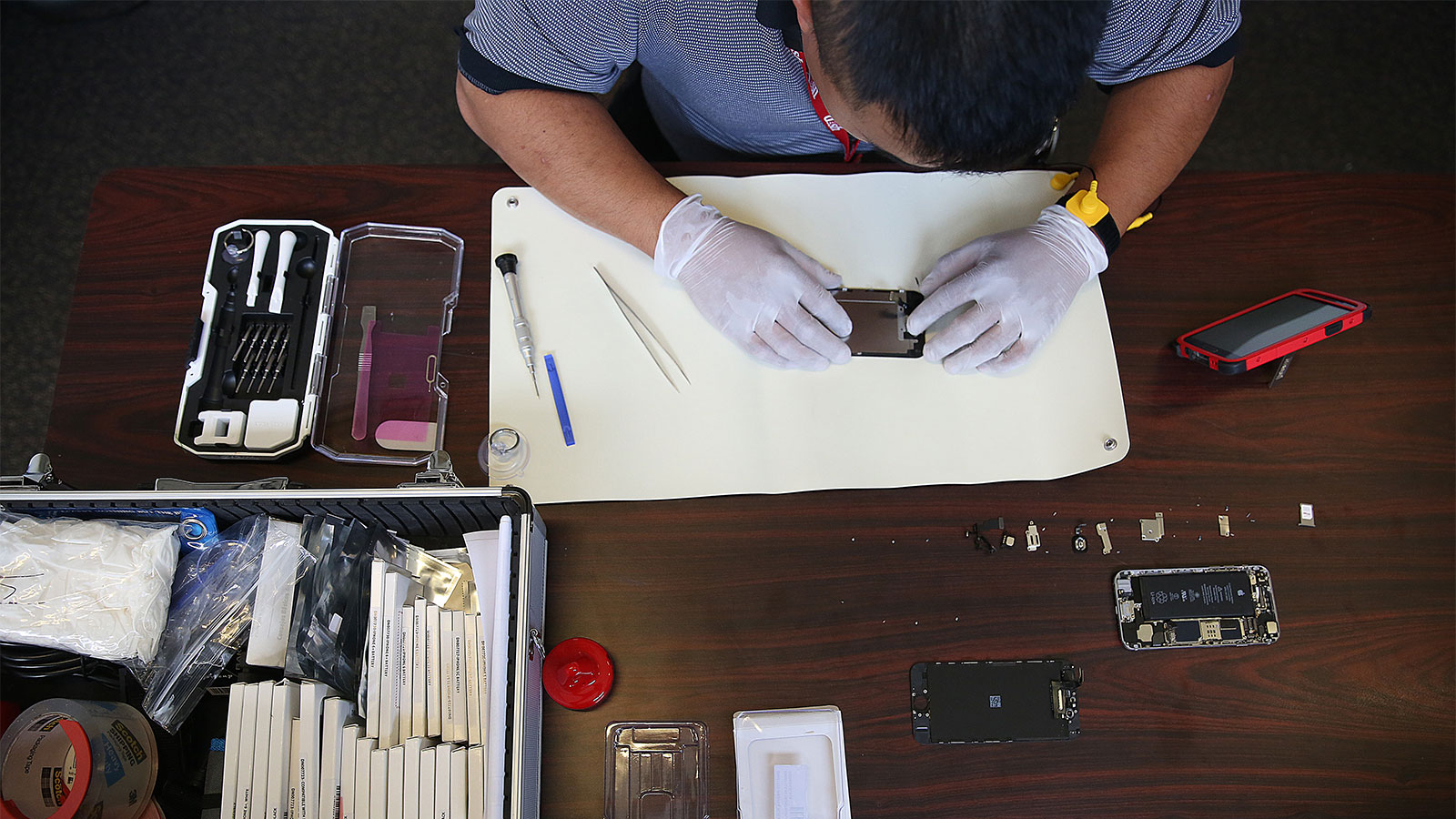
“Apple’s support for California’s Right to Repair Act demonstrates the power of the movement that has been building for years and the ability for industries to partner with us to make good policy to benefit the people of California,” Eggman told Grist in an emailed statement. “I’m grateful for their engagement on this issue and for leading among their peers when it comes to supporting access to repair.”
By choosing to work with lawmakers on SB 244, Apple is following in the footsteps of Microsoft, which negotiated the details of a recent Washington state right-to-repair bill before supporting it publicly. (Ironically, that bill stalled out in the state Senate after failing to gain the support of a key Democrat who is a former Apple executive.) While it’s unclear whether Microsoft’s cooperative approach on right to repair in Washington directly influenced the iPhone maker’s strategy in California, advocates previously told Grist that Microsoft’s leadership helped bring the entire tech industry to the negotiating table. Apple didn’t respond to a request for comment.
The California Senate passed SB 244 by a vote of 38-0 in May. The state Assembly’s appropriations committee is expected to vote on the bill next week, after which it could go to the Assembly floor for a vote.
California appears to have a good shot at becoming the fourth state to sign a right-to-repair bill into law over the past year, following New York, Colorado, and Minnesota. A strong right-to-repair law in California has the potential to become the de facto standard, potentially leading to a national agreement between Big Tech and the repair community similar to what happened in the auto industry after Massachusetts passed a right-to-repair law for cars.
But regardless of this bill’s fate, advocates are taking a moment to celebrate their latest victory.
“It’s a huge win for the whole coalition that were dogged in their pursuit of legislation, and a proud moment for all of us watching the big guns fall,” Repair.org executive director Gay Gordon-Byrne said in a statement.
This story was originally published by Grist with the headline In a historic about-face, Apple publicly supports right-to-repair bill on Aug 24, 2023.

Danity Laukon was sitting in her bedroom in her two-bedroom flat in Suva, Fiji when she got the call. It was November 2021, and her dad, more than 1,800 miles away at her home in Majuro in the Marshall Islands, had died after a battle with diabetes.
He was 50 years old.
Diabetes is not an illness that is directly caused by radiation. But Laukon believes that American nuclear testing in the Pacific played a role in his early death.
After years of nuclear bomb detonations in the Marshall Islands, fallout and forced relocations of communities began a ripple effect: many Indigenous Marshallese people who had relied on subsistence farming and fishing for 4,000 years suddenly couldn’t trust the safety of their food, becoming reliant on imported products, and unhealthy, non-native processed foods.
And those were the lucky ones. On Utrik atoll, where Laukon’s maternal family is from, many residents fell ill from acute radiation sickness.
Now she’s worried her community will face even more health risks. On Thursday, the government of Japan began releasing wastewater from the wrecked Fukushima Daichi nuclear plant into the Pacific Ocean, and plans to continue to do so gradually for the next 30 years.
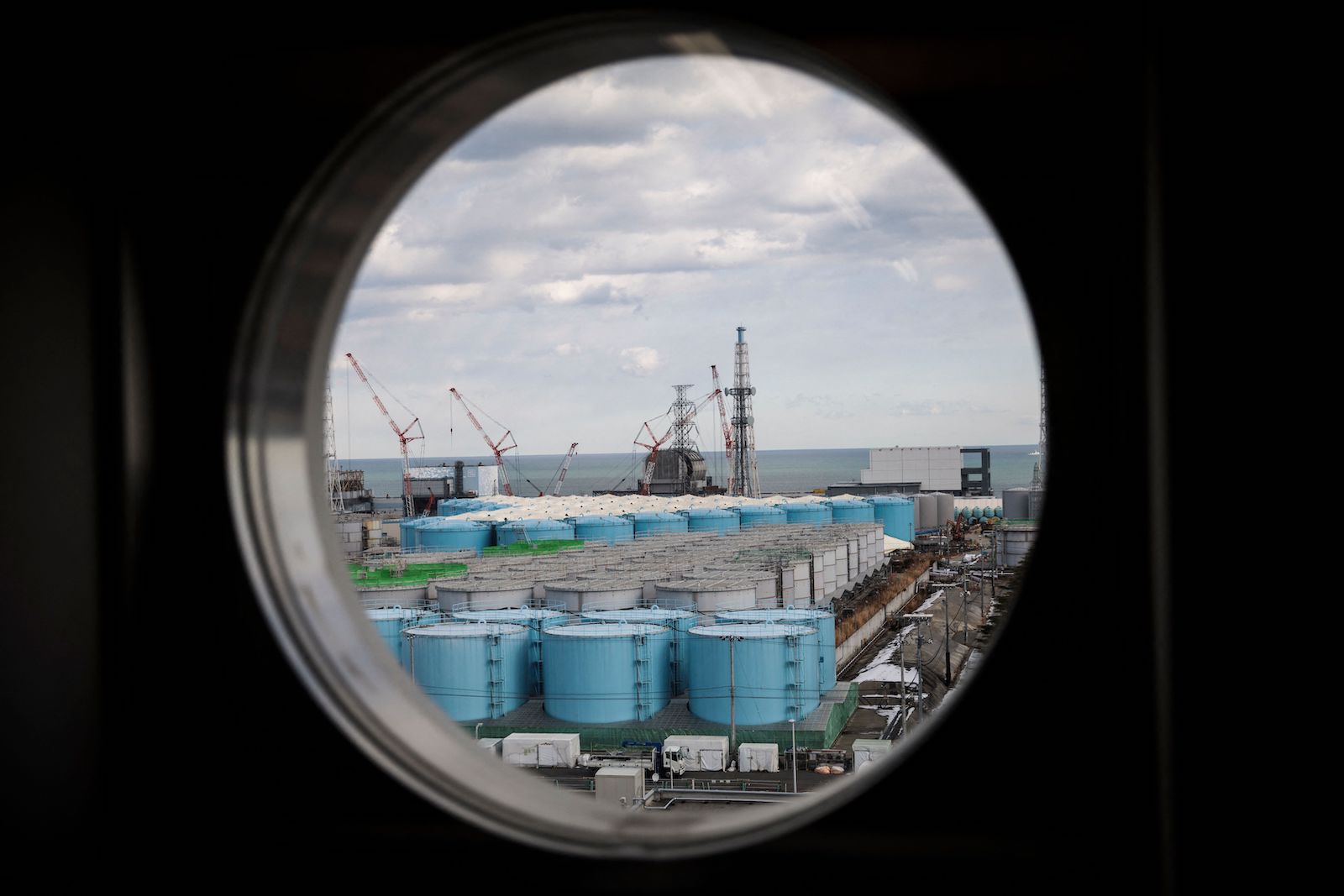
Japan is treating the water before it is poured into the sea, but the water will still contain low levels of radioactive contaminants that can’t be removed. Japan promises that the levels of contaminants present will be significantly lower than international health standards, and has gained the support of a key United Nations agency. But some scientists remain concerned about how little is known about potential long-term effects of the wastewater.
Japanese officials declined to speak on the record about their plans but have publicly outlined an argument that the country is running out of room to store contaminated water from the nuclear power plant and that another earthquake – similar to the quake that damaged the plant – could release the stored water before being treated. The plan now is to treat contaminated water, then dilute it into the Pacific Ocean over the course of three decades in order to more quickly decommission the nuclear facility.
In 2011, a 9.1-magnitude earthquake struck Japan causing a tsunami that killed more than 19,000 people and knocked out emergency generators to the Fukushima nuclear plant. In the hours after, three nuclear reactors melted down, forcing the evacuation of more than 100,000 people. Radioactive water spilled into the Pacific and was carried east by currents toward the United States. Two and a half years later, radiation from the plant was detected in waters off California, but at levels considered harmless.
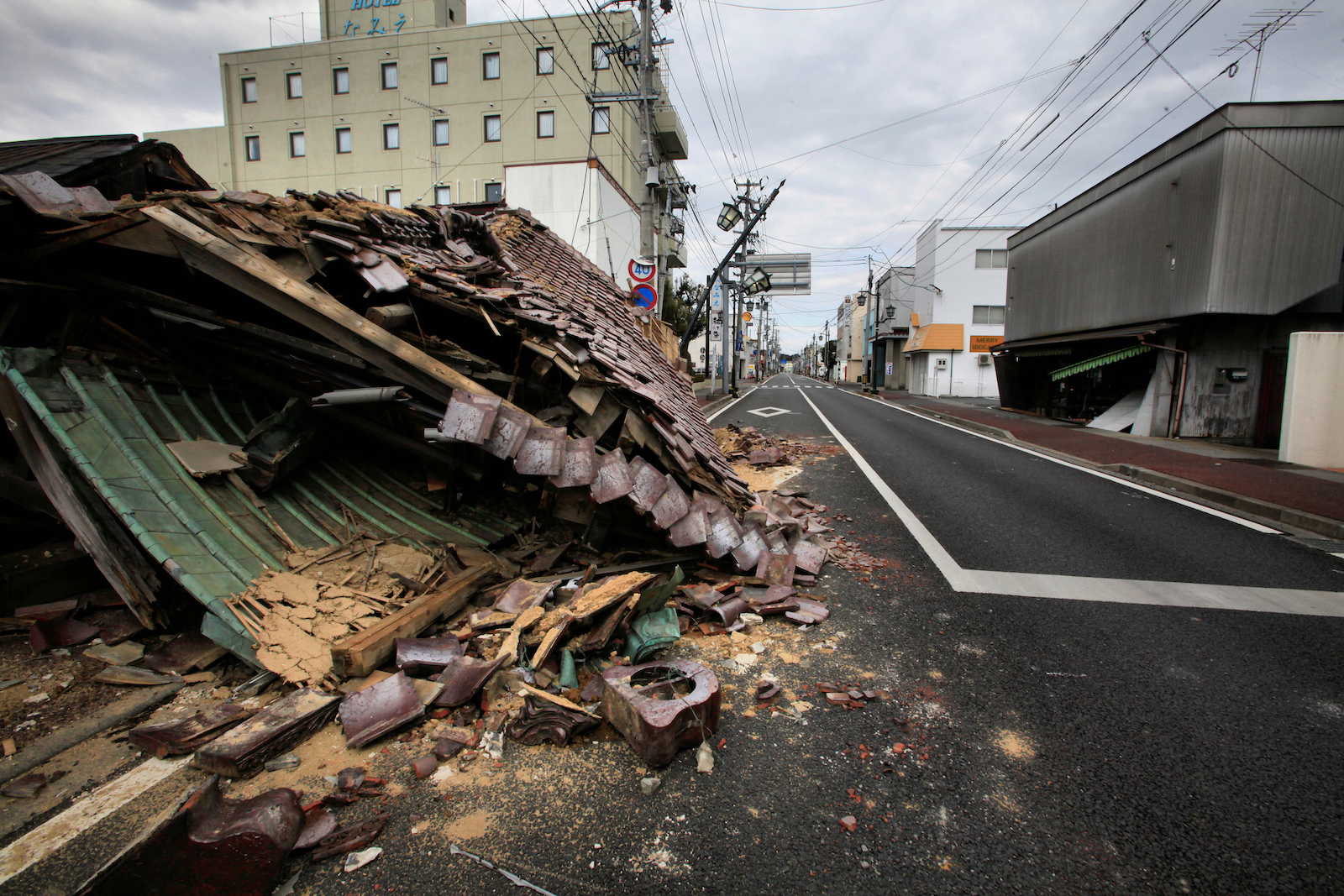
In the decade since, Japan has erected more than 1,000 tanks to store more than a million tons of water from Fukushima: rainwater, groundwater, and water pumped into the facility to cool the damaged reactors. Once treated, that water will be poured into the Pacific for the next three decades.
Japanese officials have promised that the levels of contaminants present in the wastewater will be significantly lower than international health standards, and last month, the International Atomic Energy Agency, a United Nations agency that oversees nuclear energy, greenlit the plan when it released a report describing the wastewater as having a “negligible radiological impact on people and the environment.”
However, some scientists remain concerned about how little is known about potential long-term effects of that wastewater, while many Indigenous peoples in the Pacific, like Laukon, worry that the move will add an additional burden to the health disparities communities already face. For Laukon, Japan’s decision is an extension of a long-running history of using the Pacific as a dumping ground for nuclear waste.
“It’s giving us more to deal with,” she said. “It feels helpless.”
During the Cold War, Britain, France and the U.S. tested more than 300 nuclear bombs across the Pacific regions of Polynesia and Micronesia as well as in the deserts of Australia. After a detonation in the Marshall Islands, children on Rongelap atoll ate “snow” that fell from the sky that later turned out to be calcium debris from the fallout. Radioactive debris clung to the coconut oil of women’s hair.
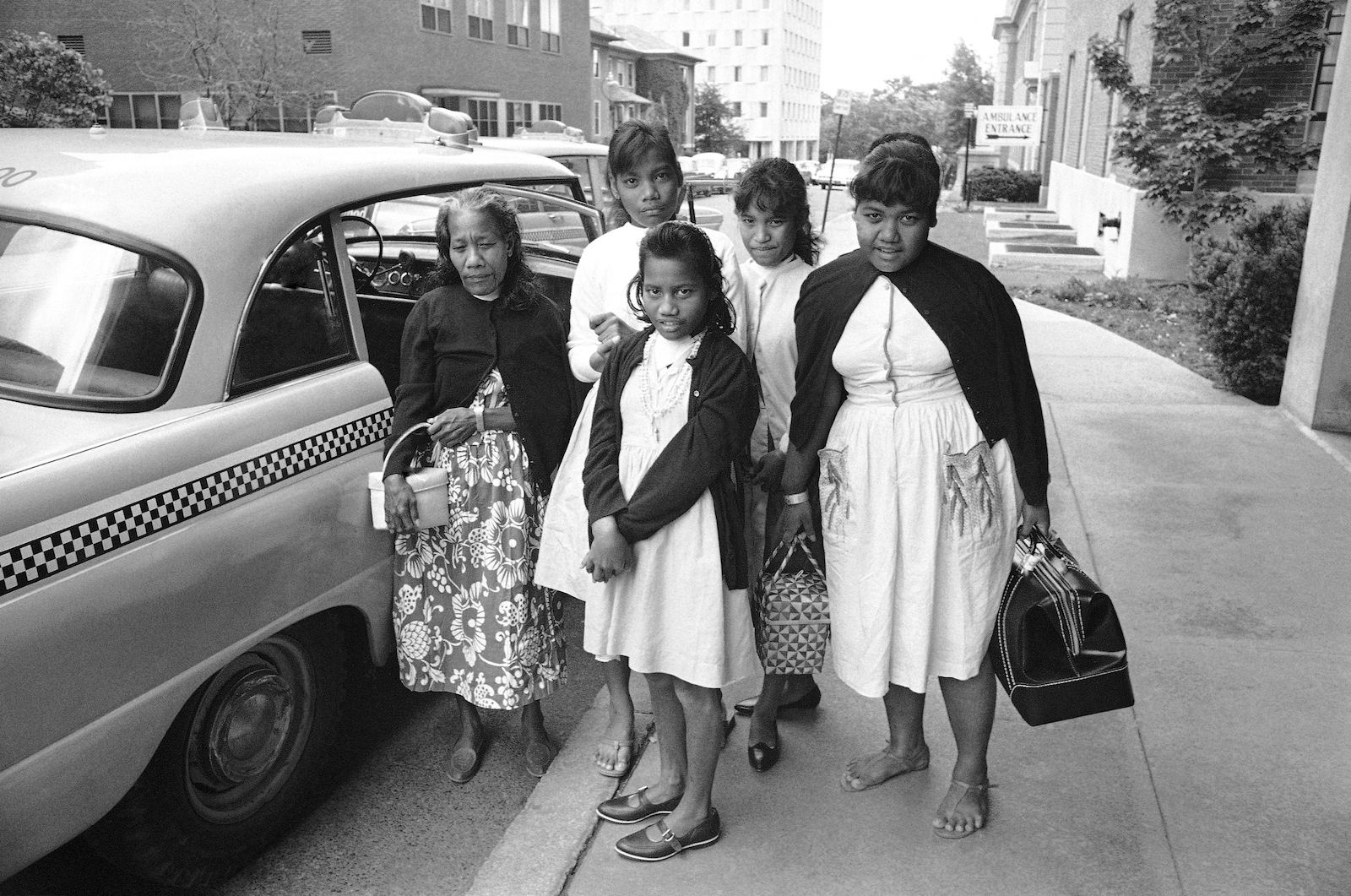
At Fukushima, one concern about the discharge is around tritium, a radioactive isotope produced in nuclear reactors that can’t be removed through Japan’s treatment process. Japanese officials say that once the wastewater mixes into the ocean one kilometer off of Japan’s shores, the amount of tritium present is expected to be well below the World Health Organization’s standards for drinking water quality –1,500 becquerels per liter compared with the WHO limit of 10,000 becquerels per liter; levels comparable to those in water released from normally-operating nuclear power plants in China, the United Kingdom and Canada.
Japan says the discharge is safe, but Timothy Mousseau isn’t so sure. The biologist and professor at the University of South Carolina and author of an exhaustive review of existing studies on tritium currently awaiting publication.
“The bottom line from my perspective is that (tritium) has been insufficiently studied to be making hard promises about the long-term safety of this kind of release,” Mousseau said. “We don’t actually really understand what the potential ramifications of a massive point source of tritium will be on the natural environment.”
While exposure to tritium through swimming or drinking water isn’t a risk, the radioactive isotope can bioaccumulate through the food chain. Studies of mice and rats suggest that ingesting tritium could lead to cancer and fertility problems, Mousseau said, but whether that would happen in humans isn’t clear because the radioactive isotope hasn’t been studied enough.
“We really don’t know whether there will be a significant hazard to humans at the end of the food chain,” said Mousseau.
That potential to impact the food chain is a big concern to Robert Richmond, director of the Kewalo Marine Laboratory at the University of Hawaiʻi and a professor who specializes in marine conservation biology and coral reefs.
Richmond is part of a panel of experts advising the Pacific Islands Forum, the chief diplomatic body representing Pacific island nations, on Japan’s plan. In February, he visited Japan to meet with the country’s scientists about the release. He left unimpressed by the lack of data they provided regarding the contents of their water tanks and the effectiveness of their treatment system.
“When they say the science is impeccable — no, anything but,” he said.
Richmond and his fellow scientists saw red flags in what data did exist including inconsistencies and poorly designed sampling protocols. One of Richmond’s colleagues, Kenneth Buesseler, is a marine radiochemist and senior scientist at the Woods Hole Oceanographic Institution.
Buesseler says the water flowing through the plant is exposed to more radiation than cooling water in normally functioning nuclear reactors because it’s in direct contact with molten coil. That means the water will need to be treated multiple times to reach the health standards that Japan has promised. He doesn’t believe Japan has effectively demonstrated that its treatment system can consistently remove the high levels of dangerous compounds present in the wastewater.
He also doubts that there’s an urgent need to get rid of the water and says Japan should consider other viable alternatives. The rush to discharge the water, Richmond said, suggests Japan is choosing the cheapest, most politically expedient method to get rid of the nuclear waste rather than doing what’s best for its neighbors and the ocean, which is already stressed from the effects of climate change, plastic pollution and ocean acidification.
“Once you’ve made a mistake, there’s no turning back, and all the monitoring in the world does nothing to protect ecosystems or the people who depend on them,” he said. “It simply tells you when you’re screwed and that doesn’t really do anything.”
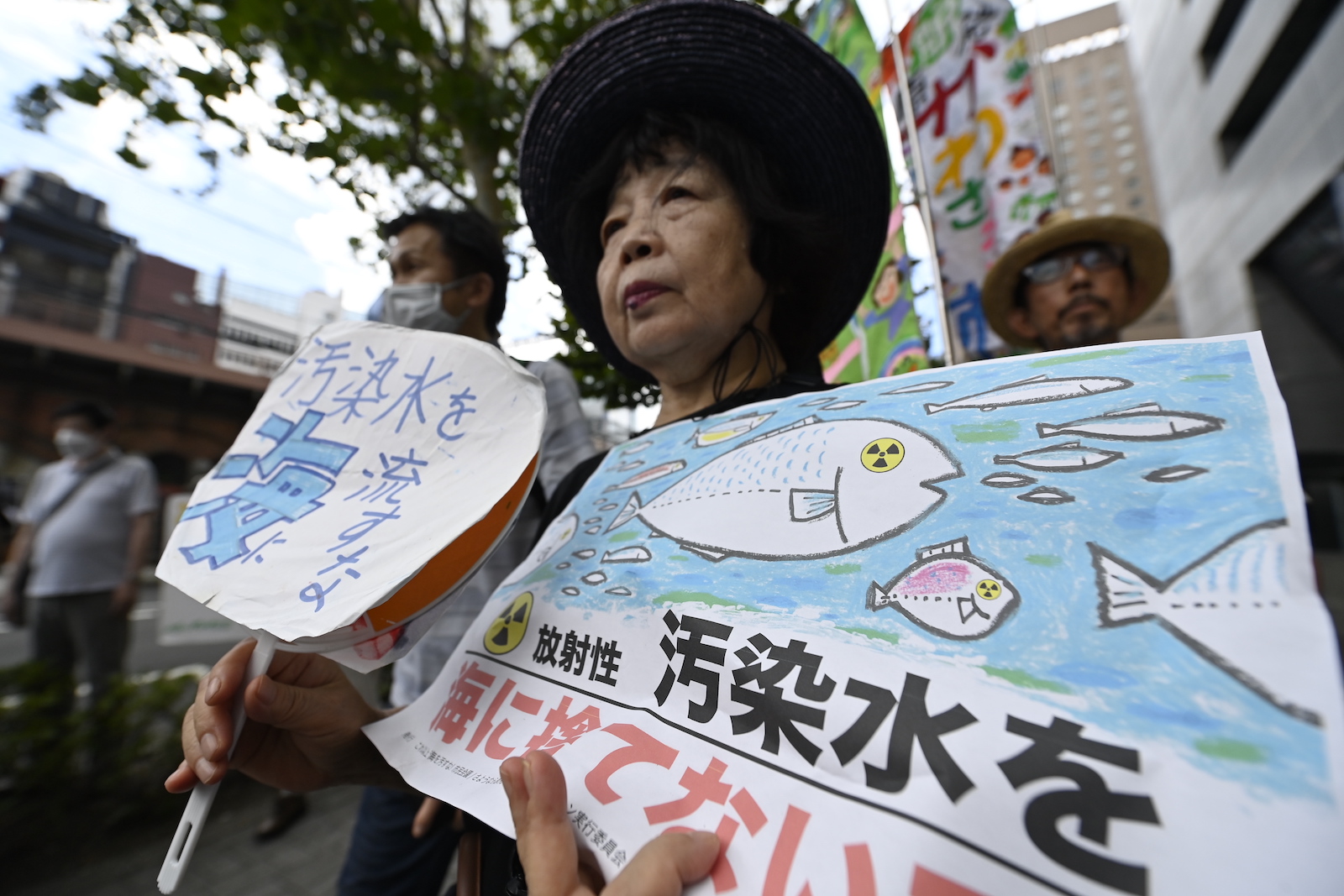
Pacific opposition to the plan was initially strong, but after Japanese officials carried out a multi-million dollar advertising campaign to sway public opinion including meeting with Pacific leaders, several expressed support, most recently Fiji Prime Minister Sitiveni Rabuka.
On Twitter on Tuesday, Rabuka called the comparison of Japan’s controlled wastewater discharge to historic nuclear testing in the Pacific “fear mongering.”
“It’s impossible to compare those nuclear tests with the careful discharge of treated wastewater from Fukushima over a period of approximately 30 years,” he wrote.
But other leaders, like Vanuatu’s foreign minister, remain unconvinced. Sheila Babauta, a former legislator from the U.S. Commonwealth of the Northern Mariana Islands, abbreviated as CNMI, authored a resolution that condemned Japan’s plan in 2021. Today, she remains resolute in her opposition.
“I’m deeply concerned for the people of the CNMI and how decisions by major world powers are being made without our knowledge and how that’s going to impact our lives today and for future generations,” she said.
On Tuesday, Laukon was visiting Honolulu, and woke up to Facebook messages from friends asking her about Japan’s plan to release the wastewater that week. What could they do? Could they put out a statement criticizing the plans? Would it make a difference?
It took her a while for the reality to sink in — the fact that what she and others had been campaigning against was actually happening.
“To be honest, it feels helpless to really voice what you want to say because does it matter? Are they listening?” she said. “But it does matter. Whatever we do now will still affect later generations. And that’s why I’m worried.”
It was hard to put how she felt into words. What could she say that could capture the feeling she had about what she feared, what this big decision that was so far out of her control meant for her people?
She finished composing a poem she had started writing last week in Fiji. It was about a turtle who lays eggs under the full moon, only to realize they won’t hatch.
“Under a full moon / I see raindrops / blue water / an island is grieving / in silence,” she wrote.
This story was originally published by Grist with the headline As Japan releases Fukushima wastewater into the ocean, Pacific Islanders are reminded of a never-ending nuclear legacy on Aug 24, 2023.
Looking to reduce your food waste? Or eat more veggies? If so, maybe it’s time to start a home garden. According to new research from the University of Sheffield, people who grow produce at home tend to consume more fruits and vegetables, and have much lower amounts of food waste compared to households without gardens.
The study, published in Plants, People, Planet, found that people who grew about 50% of their annual vegetable supply and 20% of their annual fruit supply ended up consuming 70% more produce than the national average in the UK.
Further, people growing their own food at home were creating about 95% less food waste compared to the average UK household, according to the researchers.
As reported by Divert, which was not involved in the study, the average UK household throws out nearly 2 kilograms (4.4 pounds) of food per day, totaling 9.5 billion metric tons of food waste each year.
According to the authors, the findings are promising, showing that growing produce at home can improve food security, self-sufficiency, nutrition and conservation. The study authors wrote that growing food at home could also contribute to several Sustainable Development Goals.
“Global food security is one of the biggest challenges we will face in the future, therefore it’s crucial that we find new ways to increase the resilience of the UK food system,” Jill Edmondson, an author of the study from the University of Sheffield’s School of Biosciences, said in a statement. “This study provides the first long-term evidence that household food production could play [a role] in promoting healthier diets through self-sufficiency and adds important support to any policy making that seeks to expand household level fruit and vegetable production.”
However, the authors noted that obstacles prevent access to gardening for some people, including space, suitable land for crop-growing (particularly in urban areas), and access to skill-building in gardening and food preservation. Although low-income households could benefit greatly from growing food, these families also tend to have limited access to space to establish a garden, the study highlighted.
“We need to find ways to overcome socio-economic challenges to upscaling household food production, especially among those most affected by low fruit and vegetable intakes, like low-income families,” said Zilla Gulyas, an author of the study, also with the University of Sheffield’s School of Biosciences. “Increasing the amount of space available to UK households to produce their own food is essential to this, especially given the steady decline in allotment land nationally.”
The post Gardening Households Consume More Fruits and Vegetables and Create Less Food Waste, Study Finds appeared first on EcoWatch.
Anyone who lives near a body of water is probably familiar with toxic algal blooms….
The post Avoiding Algal Blooms appeared first on Earth911.